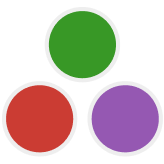The healthcare industry has witnessed a significant transformation with the emergence of the Internet of Medical Things (IoMT).
This groundbreaking concept combines web development and connected devices to enhance patient care, improve diagnostics, and revolutionize the way healthcare is delivered. In this article, we will explore how web development career is empowering the IoMT and transforming the landscape of healthcare.
The Essence of the Internet of Medical Things (IoMT):
The IoMT refers to the integration of medical devices, sensors, and other healthcare equipment with internet connectivity. These connected devices collect real-time data, enable remote monitoring, and facilitate seamless communication between patients, healthcare providers, and medical systems.
The Role of Web Development in IoMT:
Web development plays a vital role in IoMT by creating user interfaces, data visualization platforms, and secure networks to facilitate communication and data management. It enables the seamless integration of medical devices and empowers healthcare professionals with real-time data access.
Remote Patient Monitoring and Telehealth:
IoMT devices, such as wearable sensors and mobile health applications, enable remote patient monitoring and telehealth services. Web development facilitates the creation of intuitive and user-friendly interfaces that allow patients to monitor their health conditions, share vital signs with healthcare providers, and receive virtual consultations.
Real-Time Data Collection and Analysis:
Connected devices in the IoMT generate vast amounts of data in real-time. Web development helps in building robust databases and data analytics platforms that process and analyze this data efficiently. Healthcare professionals can leverage these insights to make informed decisions, detect anomalies, and provide personalized treatments.
Enhancing Diagnosis and Treatment:
Web development enables the integration of medical devices, electronic health records, and clinical decision support systems. This integration allows for seamless data exchange, improved diagnostic accuracy, and personalized treatment plans. It empowers healthcare providers with comprehensive patient information at their fingertips, leading to better outcomes.
Improved Medication Management:
IoMT devices can aid in medication management by providing reminders, tracking adherence, and sending alerts to healthcare providers in case of non-compliance. Web development facilitates the creation of medication management platforms that assist patients in taking their medications correctly and help healthcare providers monitor medication adherence.
Strengthening Communication and Collaboration:
Web development fosters enhanced communication and collaboration among healthcare teams, patients, and caregivers. Secure messaging systems, patient portals, and teleconferencing tools enable seamless communication, facilitate remote consultations, and ensure efficient coordination of care.
Ensuring Data Security and Privacy:
As the IoMT involves the exchange of sensitive patient data, web development prioritizes robust security measures. Implementing encryption protocols, access controls, and compliance with data protection regulations is crucial to safeguard patient privacy and maintain data integrity.
Future Possibilities and Challenges:
The IoMT holds immense potential for transforming healthcare delivery, but it also presents challenges. Web developers need to ensure interoperability, scalability, and usability while creating IoMT solutions. Additionally, addressing concerns related to data privacy, regulatory compliance, and ethical considerations will be essential for the widespread adoption of IoMT.
Conclusion:
Web development has become a driving force in the Internet of Medical Things, revolutionizing the healthcare industry. By enabling remote patient monitoring, real-time data analysis, enhanced diagnosis, and improved communication, web developers are shaping the future of healthcare you can learn in Web development course. As the IoMT continues to evolve, collaboration between web developers, healthcare professionals, and policymakers will be crucial in harnessing its full potential and delivering quality care to patients worldwide.


Top comments (0)